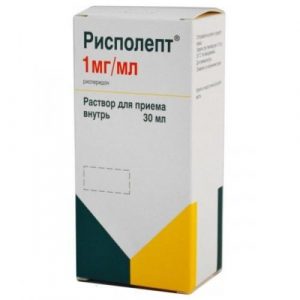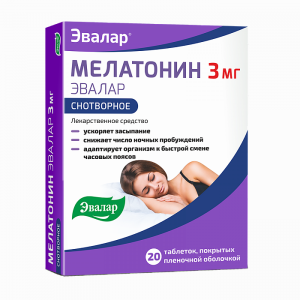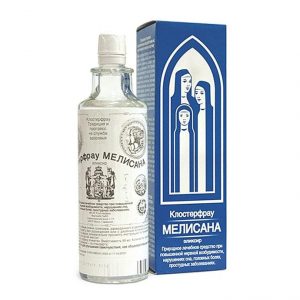Description
Release form
Lyophilisate for solution for intramuscular administration
Packaging
3 vials
Pharmacological action
Xeomin acts selectively on peripheral cholinergic nerve endings, inhibiting the release of acetylcholine. The introduction into cholinergic nerve endings takes place in three stages: the binding of the molecule to the external components of the membrane, the internalization of the toxin by endocytosis, and the translocation of the endopeptidase domain of the toxin from the endosome to the cytosol. In the cytosol, the endopeptidase domain of the toxin molecule selectively cleaves SNAP-25, an important protein component of the mechanism that controls the membrane movement of exo-vesicles, thus stopping the release of acetylcholine. The final effect is relaxation of the injected muscle.
The drug begins within four to seven days after the injection. The effect of each procedure lasts, as a rule, three to four months, although it can last significantly longer or shorter.
Indications
Blepharospasm, idiopathic cervical dystonia (spasmodic torticollis) of predominantly rotational form, spasticity of the hand after a stroke, hyperkinetic folds (facial wrinkles) of the face.
Contraindications
The drug is contraindicated for people who are allergic to the components of the drug, with impaired neuromuscular transmission (gravis, Lambert-Eaton syndrome, prescribed with caution in case of amyotrophic lateral sclerosis, in case of neurological diseases resulting from degeneration of motor neurons and other diseases, and other muscle transmission). The drug is not administered at elevated temperatures and acute infectious or non-infectious diseases.
The drug is contraindicated in pregnancy and lactation.
The drug is not administered to children and adolescents under 18 years of age.
Special instructions
Immediately after the injection, the remaining solution in the vial or in the syringe should be inactivated with sodium hydroxide solution (0.1 N NaOH). All auxiliary materials in contact with the preparation must be autoclaved or inactivated for at least 18 hours with a solution of sodium hydroxide (0.1 N NaOH). Spilled product should be wiped off with an absorbent cloth dipped in sodium hydroxide solution.
Influence on the ability to drive vehicles and control mechanisms
Due to the nature of the diseases treated by the drug, the patient s ability to drive various vehicles can be reduced. Besides, side effects of the drug can adversely affect the patient s ability to control the technique, respectively, the patient should refrain from such activities until his abilities are fully restored.
Composition
1 vial contains:
Active ingredient: botulinum toxin type A 50 units
Excipients: sucrose, human serum albumin.
Dosage and administration of
V / m. The drug can only be administered by doctors with special training, as well as experience in handling botulinum toxin and electromyography equipment. The doctor sets the dosage and number of injection sites into the muscle for each patient individually.
blepharospasm: after dissolution, Kseomin is injected with a sterile needle 27-30 G.
Recommended initial dose is 1.252.5 IU (0.050.1 ml) at each injection site, the drug is injected into the medial and lateral parts of the circular muscle of the eye (m . orbicularis oculi) of the upper eyelid and in the lateral part of the circular muscle of the eye of the lower eyelid.
If vision is impaired due to spasms in the forehead, lateral areas of the circular muscle of the eye and upper face, additional injections may be made in these areas. The effect of the drug begins, on average, within 4 days after the injection. The effect of each procedure lasts, as a rule, 3-4 months, although it can last significantly longer or less.
If the effect of the initial dose was insufficient (duration of
Spastic torticollis: in the treatment of spasmodic torticollis, the dosage should be selected for each patient individually, depending on the position of the neck and head, localization of pain, muscle volume (hypertrophy, atrophy), the patient s body weight and his reaction to therapeutic procedures. In the practice of treatment, the maximum dose of the drug in the course of one procedure should usually not exceed 200 units, however, a dosage of up to 300 units is possible. At the same place, you should not enter a dose of the drug in excess of 50 units.
Therapy for spasmodic torticollis involves injections into the sternocleidomastoid muscle, the muscle that raises the scapula in the scalene muscles, the belt muscle and / or the trapezius muscle.
Do not inject into both sternocleidomastoid muscles, as this increases the risk of adverse effects of the drug (in particular dysphagia), which occur with bilateral injections of the drug into this muscle, or at doses exceeding 100 units.
Needles of numbers 25, 27 and 30 G are used for injection into superficial muscles, and needles of number 22 are used for deep muscles.
With spastic crankshaft, electromyography may be necessary to determine the muscles involved. Injection in several places allows the drug to evenly cover areas of muscles prone to dystonia (especially when injected into large muscles). The optimal number of injection sites depends on the size of the muscle. The effect of the drug begins, on average, within 7 days after the injection. The effect of each procedure lasts approximately 3-4 months, but can last significantly longer or shorter. The interval between procedures should be at least 10 weeks.
Side effects of
In the treatment of blepharospasm
Often – ptosis (6.1%), dry eyes (2%).
Infrequently – paresthesia, conjunctivitis, dry mouth, skin rash, headache, muscle weakness.
In addition, when using a similar drug containing botulinum toxin type A and used in clinical trials along with Xeomin, the following side effects were noted. They are possible with the use of the drug Xeomin.
Often – superficial keratitis, lagophthalmos, irritation, photophobia, lacrimation.
Infrequently – keratitis, ectropia, diplopia, dizziness, diffuse skin rashes / dermatitis, inversion of the eyelid, focal facial paralysis, facial muscle weakness, fatigue, blurred vision, blurred vision.
Rarely – local swelling of the skin of the eyelid.
Very rarely – acute angle-closure glaucoma, ulceration of the cornea.
In the treatment of spastic torticollis
Often – dysphagia (10%), muscle weakness (1.7%), back pain (1.3%).
Infrequently – inflammation or oppression at the injection site, headache, asthenia, sweating, tremors, hoarseness, colitis, vomiting, diarrhea, dry mouth, bone pain, myalgia, skin rashes, itching, peeling of the skin, pain in eyes. In addition, when using a similar drug containing botulinum toxin type A and used in clinical trials along with Xeomin, the following side effects were noted. They are possible with the use of the drug Xeomin.
Very often – pain.
Often – dizziness, increased blood pressure, numbness, general weakness, catarrhal symptoms, general malaise, dry mouth, nausea, headache, stiff muscles, irritation at the injection site, rhinitis, upper respiratory tract infection.
Infrequently – shortness of breath, diplopia, fever, ptosis, speech impairment.
Dysphagia can be expressed from very mild to severe degrees, with the possibility of aspiration in rare cases, medical attention is required. Dysphagia can persist for 2-3 weeks after the injection, however, a case of three-month dysphagia has been recorded.
Dysphagia is a dose-related complication: according to clinical studies, dysphagia is rare if the total dose of the drug does not exceed 200 units in one procedure.
Common side effects of
The information below is based on data on the effects of other complex preparations containing botulinum toxin type A.
Information on severe negative effects that may be associated with damage to the cardiovascular system – such as arrhythmia and myocardial infarction, in .h. fatal – extremely minor. Whether these deaths were caused by injections of type A botulinum toxin, or by concomitant cardiovascular disease, is not exactly established. One case of anaphylactic shock is reported after the administration of a complex preparation containing botulinum toxin type A.
Side effects such as exudative polyform erythema, urticaria, psoriasis-like rashes, itching and allergic reactions are reported. however, their conditionality by the action of a complex preparation containing botulinum toxin type A is not confirmed.
Sometimes, after injection of type A botulinum toxin, fluctuations in the electrophysiological background were noted in some distant muscles, this side effect is not associated with muscle weakness or other electrophysiological abnormalities.
Drug interactions
Peripheral muscle relaxants should be used with caution if antibiotic is used or if antibiotic is possible or if antibiotic is possible. The effect of the drug can be reduced by the action of 4-aminoquinoline derivatives.
Overdose of
High doses of Xeomin can lead to the development of severe muscle paralysis in places remote from the injection site (in particular: general weakness, ptosis, diplopia, difficulty speaking and swallowing, as well as respiratory muscle paralysis, leading to the development of aspiration pneumonia).
In case of overdose, hospitalization with general supportive measures is necessary. In case of paralysis of the respiratory muscles, intubation and artificial ventilation of the lungs are necessary up to the normalization of the condition.
Storage Conditions
The product should be stored and transported out of the reach of children at room temperature (not higher than 25 ° C).
Term hodnosty
3 years
Dosage form
lyophilisate for pryhotovlenyya of the solution
Merz Pharma GmbH and Ko.KGaA, Germany




